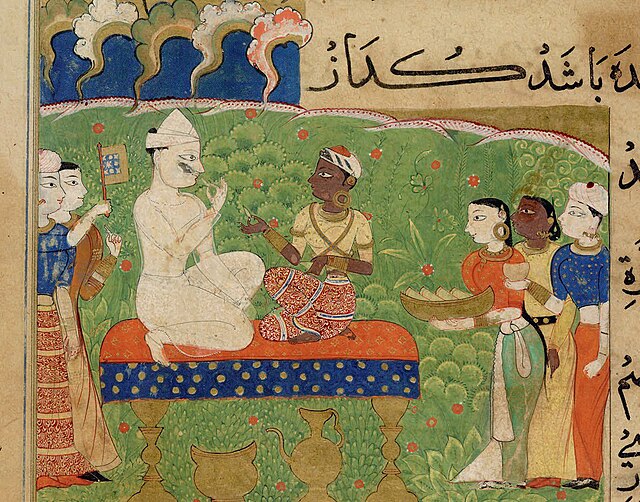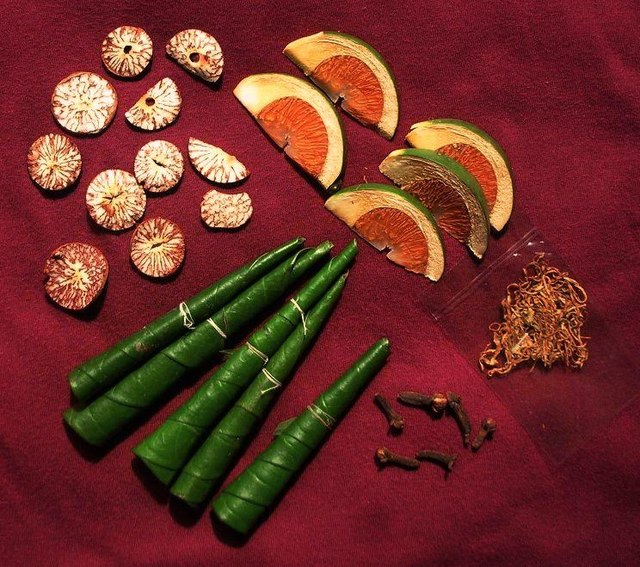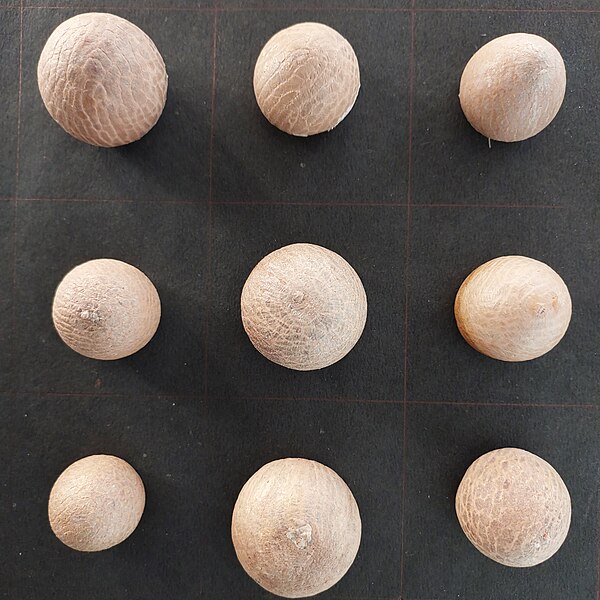Betel nut chewing, also called betel quid chewing or areca nut chewing, is a practice in which areca nuts are chewed together with slaked lime and betel leaves for their stimulant and narcotic effects, the primary psychoactive compound being arecoline. The practice is widespread in Southeast Asia, Micronesia, Island Melanesia, and South Asia. It is also found among both Han Chinese immigrants and indigenous peoples of Taiwan, Madagascar, and parts of southern China. It was introduced to the Caribbean in colonial times.
Ghiyas al-Din eats a betel chew, illustration from the Nimatnama-i-Nasiruddin-Shahi. Malwa, c. 1500. British Library
The items used in a chewing session. The betel leaves are folded. Slices of the dry areca nut are on the upper left. Slices of the tender areca nut are on the upper right. The pouch on the right has tobacco, an optional element. On the lower right, there are dried cloves.
Betel leaves at a market in Mandalay, Burma
A statue of a hermit with an offering of betel quid from Thailand
The areca nut or betel nut is the fruit of the areca palm, which grows in much of the tropical Pacific, South Asia, Southeast Asia, and parts of east Africa. It is not to be confused with betel leaves that are often used to wrap it.
Areca nuts
19th century drawing of the Areca palm and its nut
Areca (betel) nut
Areca fruits on a tree








